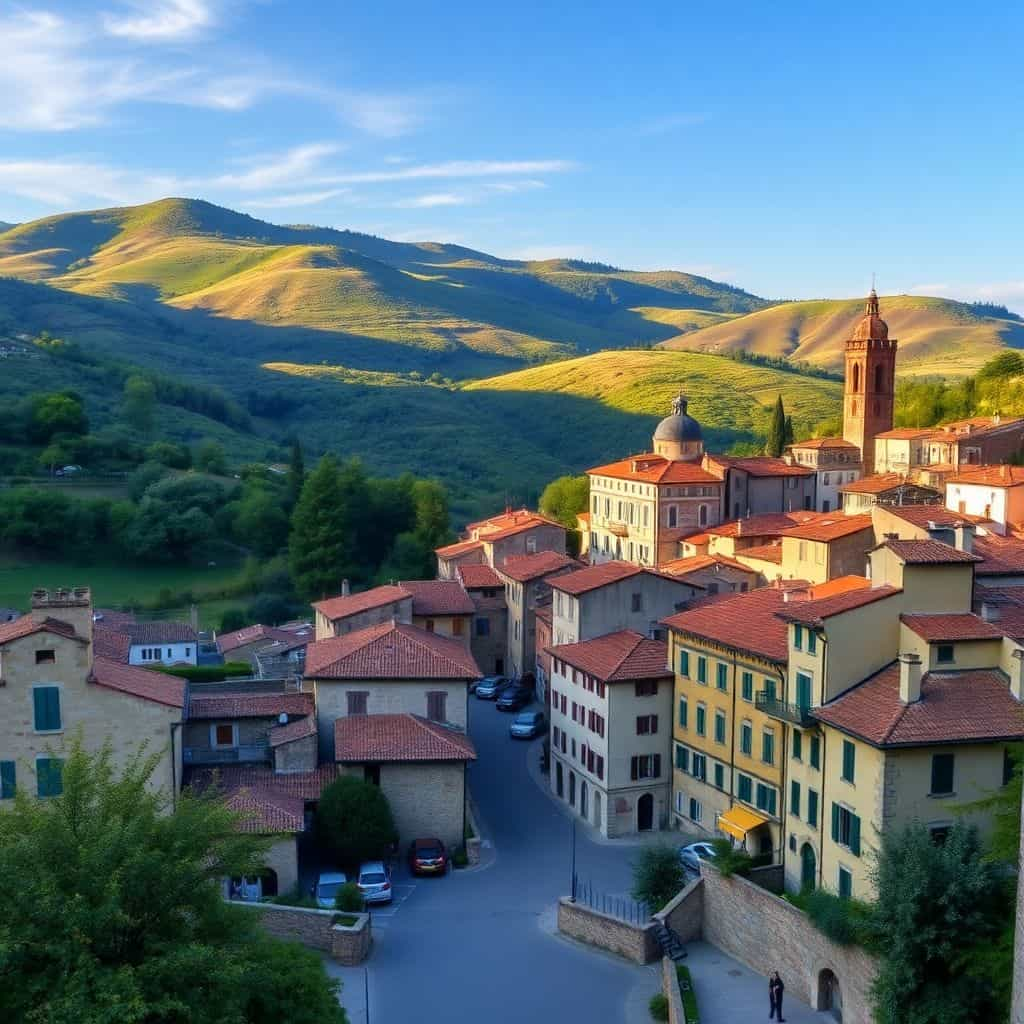In the heart of Italy’s stunningly diverse landscape, a real estate revolution is quietly taking place. As urban dwellers increasingly seek refuge from the hustle and bustle of city life, small towns across the country are witnessing an unprecedented boom in property transactions. The driving forces behind this trend are multifaceted, including the allure of a simpler lifestyle, the availability of spacious and often more affordable homes, and a growing acceptance of remote working, which has unshackled many office-bound employees from their urban confines.
The Italian property market, long dominated by major cities like Rome, Milan, and Naples, is now seeing a shift towards smaller towns. Regions such as Tuscany, Umbria, and the lesser-known Le Marche are experiencing a surge in interest from both local and international buyers. These areas, with their picturesque landscapes, rich cultural heritage, and slower pace of life, offer a compelling alternative to Italy’s bustling urban centers.
Tuscany, known globally for its rolling hills, historic architecture, and world-renowned wines, is perhaps the most emblematic of this trend. Towns such as Montepulciano, San Gimignano, and Cortona have become hotspots for buyers seeking the quintessential ‘Italian dream.’ Historically, these towns have been at the crossroads of significant events; for instance, during the Renaissance, artists and thinkers from around the world gravitated towards this region, drawn by its beauty and creative spirit.
Another region gaining popularity is Umbria, often referred to as the ‘green heart of Italy.’ While less famous than its Tuscan neighbor, Umbria offers equally enchanting landscapes and a wealth of history. Towns like Assisi, Spoleto, and Todi are celebrated for their medieval charm and vibrant cultural scenes. The affordability of properties here compared to Tuscany also plays a significant role in attracting prospective buyers.
Le Marche, tucked away on the eastern side of Italy and often overlooked, is becoming a hidden gem in the real estate market. The region boasts stunning Adriatic coastlines, hundreds of ancient hilltop villages, and thriving artisan communities. Its relatively low property prices and the quality of life it offers are increasingly appealing to those looking to escape the high costs associated with city living.
One cannot overlook the impact of the COVID-19 pandemic on this real estate movement. The global shift towards remote working has redefined what many people consider essential in choosing where to live. As Joyce Parker, an analyst at a leading property consultancy, noted, ‘The pandemic has accelerated a trend that was already emerging. People are realizing they can get more space, a better lifestyle, and even a sense of community, all of which are becoming harder to find in larger cities.’
A significant cultural shift is also contributing to the popularity of these smaller locales. There is a growing appreciation for Italy’s culinary and artistic traditions, which flourish in these regions. The world’s fascination with Italian food, from pasta to pizza, finds a true-to-life experience in these rural areas where farm-to-table dining is the norm, not the exception.
Local governments have also played a role in encouraging this demographic shift by offering incentives to attract new residents. Several towns have experimented with schemes to sell homes for nominal prices provided that buyers are committed to renovating and living in them. These efforts aim to revitalize dwindling populations and preserve the architectural integrity of historic sites.
Despite the undeniable appeal, potential buyers should be aware of certain challenges that come with purchasing property in smaller towns. These may include limited access to certain modern conveniences compared to city living, potential language barriers, and the time and investment required for restoration projects. However, for those seeking tranquility and a meaningful connection to Italy’s storied past, these obstacles are often seen as acceptable trade-offs.
In conclusion, the shift towards real estate purchases in Italy’s smaller towns is a testament to enduring values amidst changing times. While the cities will always possess a magnetic pull, the promise of a simpler, more fulfilling life is increasingly drawing people to Italy’s quaint corners. As this trend continues, these towns stand on the brink of a renaissance, promising new histories to write alongside their ancient ones.
You may also like
Fiscal maneuver 2025 : Impacts on Household Savings
The 2025 budget plan proposed by the Italian government is poised to bring significant changes with potential impacts on the savings of Italian families. This article explores the details of the fiscal maneuvers, the expected economic shifts, and the perspectives from experts and policymakers.
The New House Bonus Rules: Tax Deductions and Eligibility
The new house bonus rules introduce significant changes to tax deductions for home renovations and energy efficiency improvements. This article delves into the specifics of these regulations, eligibility criteria, and benefits, offering a thorough analysis for homeowners.
How 100% Mortgages work for Young People ?
The 100% mortgage scheme aimed at young individuals has become a significant avenue for aspiring homeowners. This guide explores how these mortgages function, the necessary guarantees, and the eligibility criteria for individuals seeking such financial assistance.
The European Central Bank’s Progressive Mortgage Rate Cuts
The European Central Bank (ECB) has been progressively cutting mortgage rates, stirring discussions around future projections for both fixed and variable rates and a possible revival in the real estate market.
